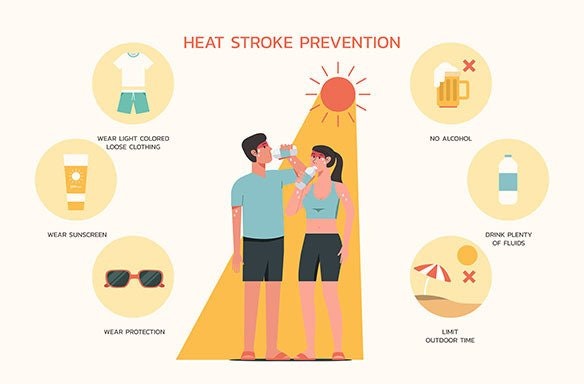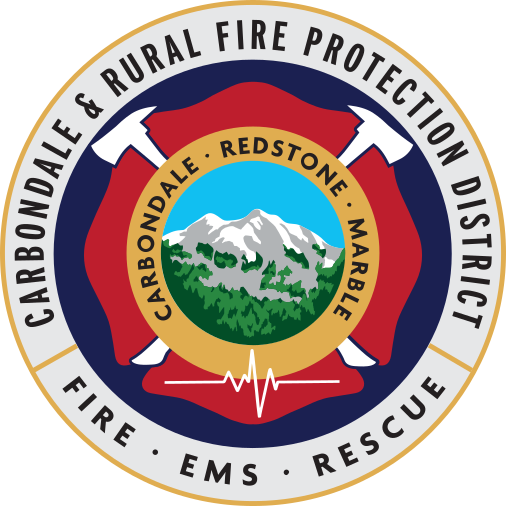Heat Related Emergencies
By admin Published July 15, 2021

When you are exposed to hot weather and sun for long periods of time, your risk for heat related illnesses increase. People often get into trouble when they don’t take the necessary precautions, prepare for their adventures, and don’t listen to the warning signs their bodies are trying to tell them. With the average daily temperatures in our area sitting steadily in the 90’s, it’s important to understand the risks and how to take care of yourself, your kids, and your animals.
There are three main stages of heat related emergencies: heat cramps, heat exhaustion and heatstroke – all of which are serious.
Symptoms to Watch Out For
• Your body feels like it’s overheating
• You have a high temperature
• Muscle spasms, headaches, dizziness or nausea
Additional Factors that Increase Your Risk
• Dehydration
• Obesity or poor physical fitness
• Certain prescription medications
• Alcohol use
• Age and gender
Adults and Heat Related Illnesses
Older adults tend to not sweat as easily and sometimes have other health related issues that affect their ability to lose heat. It’s important to remember these tips when you are thinking about venturing out on a hot day.
• Wear lightweight or light-colored clothing and opt for wearing hats that cover your face and neck
• Wear sunscreen! We recommend using SPF of 30 or more and to remember to reapply throughout the day
• Drink lots and lots… (did we say lots already?) of water and fluids! When it’s hot out, your body uses more energy to keep you cool. So even if you don’t think you need more water, you probably do.
• Make sure to check the weather for the day and plan your activities to avoid the hottest time of the day.
• If you are at increased risk, make sure to take it slow and be aware of how your body feels. Take breaks in the shade if needed.
Children and Heat Related Illnesses
For most of us, we want to spend as much time outside in the summer as possible. It’s a great time to get the family together and to make the most of our days. As long as your child is protected with sunscreen, is properly hydrated, and is wearing the right clothing you can avoid them falling ill to heat exhaustion.
However, one thing we cannot stress enough – never, ever, ever leave your child in the car. Even if you are just running in for what might be 30 seconds that’s more than enough time for your child to overheat.
Unfortunately, dozens of children die after being left in hot cars each year. Heat stroke is the leading cause of non-crash related vehicle deaths for children under 15. Did you know that a child’s body heats up 3-5 times faster than that of an average adult? When a child is left in a hot car, their major organs begin to shut down when their temperature reaches 104 degrees, and they can die when their temperature reaches 107 degrees.
Cars heat up extremely fast – in just 10 minutes a car can heat up 20 degrees and if you think that cracking a window will help cool the car down, it does little to help.
Here’s some safety tips to help keep your child safe in the heat.
• Always check the backseat to make sure all of the kids are out of the car before you lock it and walk away. Our pro tip is to leave something back there like your purse, cell phone, or backpack that you’ll have to grab.
• Avoid distractions while driving and especially when running errands, like talking on the phone, so you don’t forget about your kid in the backseat.
o It’s especially important to be aware when your routine has changed – like if your partner normally drives your kid to school, but now you have started to take on that responsibility.
• If someone else is driving your child, ask them to call or text you when your child has been dropped off safely.
• Many car deaths have happened when a curious child has locked themselves inside accidentally, so always keep your car locked when not in use.
• Remind your kids that cars, especially the trunks of cars, are not for games or playing.
If you see a child in a hot car alone, immediately call 911 and see if you can get the child out of the car. If you can get the child out before help arrives, try to spray them down with cool water and stay with them until the emergency responders get there.
Pets and Heat Related Illnesses
Your pets can also be exposed to the heat and have severe reactions to it. Be on the lookout for signs such as heavy panting, glazed eyes, a rapid pulse, unsteadiness, vomiting, or a deep red or purple tongue.
A dog can tolerate up to a temperature of 90 degrees, as long as they have plenty of water, air circulation and shade. Dogs cool themselves down through panting, so if your dog is heavily panting, drooling, and has an increased heart rate – it’s probably too hot for them!
Here are some tips for keeping your favorite furry friends safe in the heat:
• Remember that it’s not just the heat that affects your pet, but also the humidity levels.
• Try to limit exercise on hot days or wait until the cooler parts of the day to take them out. Asphalt gets very hot and can burn your pet’s paws so try to stick to grassy areas as much as possible.
• Always carry water for your pets if you won’t be near a water source.
• Watch for signs of heatstroke especially in very young, very old or overweight animals and the risk is higher. If your pet is experiencing heat stroke, move them to the shade or air-conditioned area and apply ice packs or cold towels to their head, neck or chest. We also recommend taking them to their vet to make sure everything is okay.
It’s only going to continue to get hotter during these peak summer months, so we encourage you to be safe, alert, and take care of yourselves! A sure-fire way to end a good day is by overdoing it and overheating. If you have any questions, as always, please reach out to your friends at The Carbondale Fire District!
